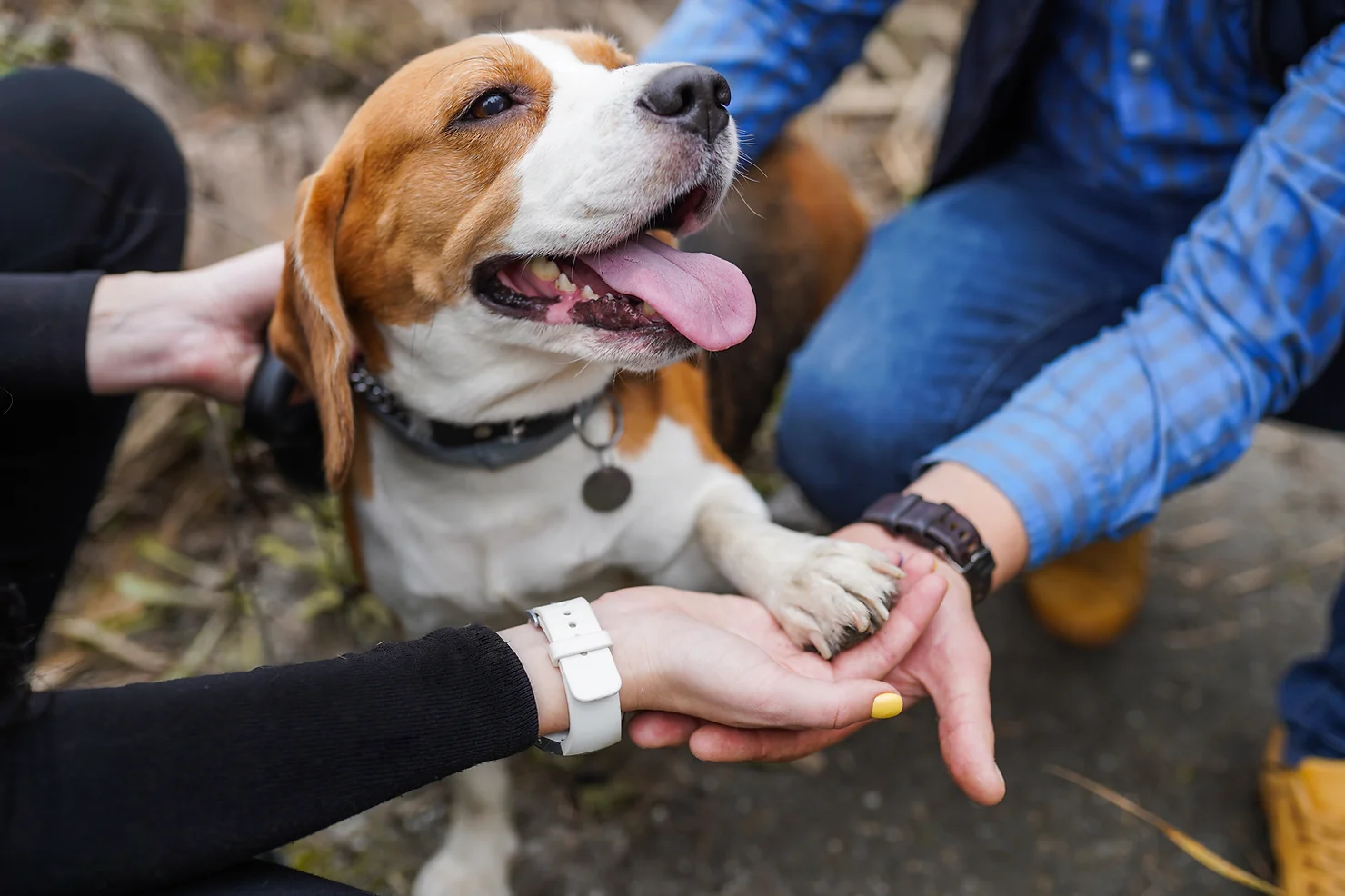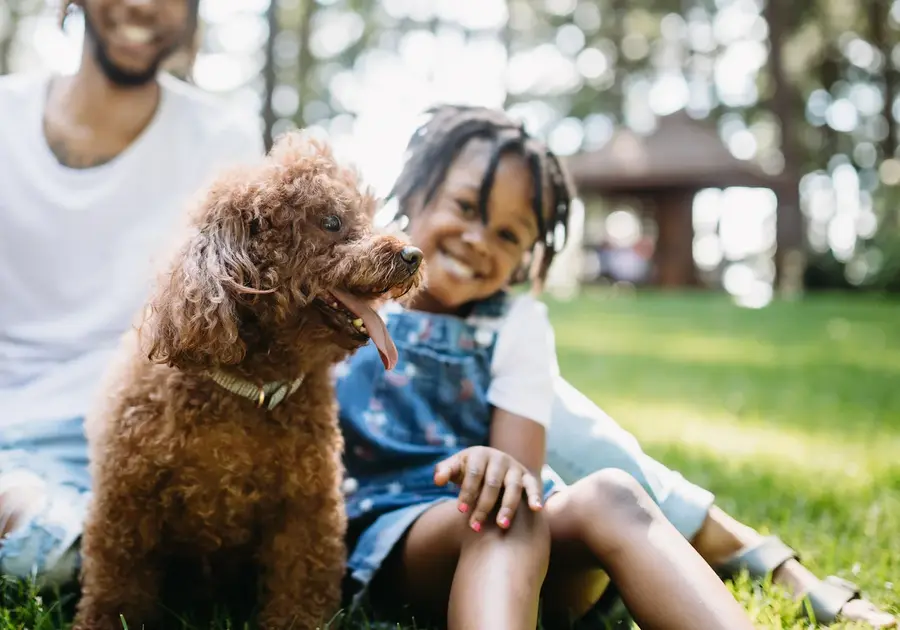As the weather warms up and we’re walking outside more, my kids are constantly asking, “Can we pet that dog?” (And if you just heard that in the voice from the viral video, you’re my people!) I love their excitement around animals, but as a parent and a personal injury attorney, I know how important it is to teach kids the right way to approach dogs. A sweet moment can quickly turn into a serious injury if children aren’t careful.
Dog bites happen more often than you think. In fact, over 4.5 million people are bitten by dogs each year, and children are the most common victims. As a lawyer at Mory & Colliersmith, PLLC, I’ve seen firsthand how devastating dog bite injuries can be—not just physically, but emotionally and financially for families.
So let’s talk about how to keep kids safe around dogs, the right way to approach an unfamiliar dog, and what to do if a bite happens—especially if the dog is unknown or a stray.
 |
A Case We Settled: When a Dog Bite Changes a Child’s Life
One case that stands out in my career as a personal injury attorney involved a young boy who was bitten on the face by a neighbor’s dog. The child had simply been outside playing when the neighbor’s dog pounced on him without warning. The bite left him with permanent facial scarring, something no child should have to endure. The emotional and physical toll on the family was heartbreaking.
At Mory & Colliersmith, PLLC, we fought hard to hold the dog owner accountable and secured a settlement to cover his medical treatments, plastic surgery consultations, and pain and suffering. While nothing can erase the trauma of that day, we were able to help provide financial support for his recovery.
Teaching Kids the Right Way to Approach a Dog
We love our family walks, and my kids are naturally drawn to every dog we pass. But before
they reach out, I always remind them:
1. Always Ask Permission First
A dog may look friendly, but that doesn’t mean it wants to be pet. Always ask the owner first
before approaching. I teach my kids to say:
“May I pet your dog?”
If the owner says no, respect that answer. Some dogs are nervous, in training, or uncomfortable around kids.
2. Use the “Fist First” Rule
Even if a dog seems friendly, never reach out with open fingers—that can feel threatening to a dog. Instead, extend a closed fist so the dog can sniff first.
Why? Dogs explore the world through scent. A fist lets them smell you safely without the risk of nipping at fingers.
3. Approach Calmly – No Sudden Movements
Young kids get excited around animals, but running up to a dog, squealing, or grabbing them can startle even the friendliest pup.
❌ No hugging or pulling on fur, tails, or ears.
✅ Let the dog come to you and pet gently under the chin or on the chest (not the top of the
head).
 |
What to Do If a Dog Bites Your Child—Even If You Don’t Know the Dog
Even with the best precautions, dog bites can still happen. If a dog ever bites your child, follow these steps:
1. Stay Calm & Assess the Injury
- Minor Bite? Clean with soap and water, apply an antibiotic, and monitor.
- Deep Puncture or Bleeding? Apply pressure with a clean cloth and seek medical attention immediately.
2. If the Dog Belongs to Someone, Get the owner’s Info
If the bite happened from someone’s pet, ask:
- Is the dog up to date on rabies shots?
- Has the dog ever bitten before?
- Get the owner’s contact information in case of complications.
3. What If the Dog Is Unknown or a Stray?
Sometimes, the dog is not familiar, is running loose, or is a stray. In these cases:
- Do NOT chase the dog. It could become aggressive or run into traffic.
- Immediately call Animal Control to report the attack. They may be able to locate the dog and check for vaccinations.
- Seek medical attention immediately. If the dog’s vaccination history is unknown, rabies treatment may be required.
- Take photos of the dog, if possible, and note where it ran off.
In Kentucky, local animal control agencies investigate dog bite reports, and tracking down an unknown dog is important to prevent future attacks.
4. Seek Medical Attention & Watch for Infection
Dog bites can become infected quickly due to bacteria in the mouth. Signs of infection include:
- Redness, swelling, or pus
- Fever or chills
- Increasing pain after 24 hours
A tetanus shot may also be needed if it’s been over 5 years since the last booster.
5. Report the Bite & Document Everything
If the bite was severe or from an unknown dog, report it to local animal control to prevent further attacks. Also, document:
- Photos of the wound
- Location of the incident
- Witness statements
 |
Who Is Liable for a Dog Bite in Kentucky?
Kentucky follows a “strict liability” dog bite law (KRS 258.235). This means:
- The dog owner is responsible for injuries caused by their dog, even if the dog has never bitten before.
- Victims may be able to recover medical expenses, lost wages, and pain & suffering.
If the dog is unknown, cases become more complex, but you may still have options. Contact Mory & Colliersmith, PLLC to discuss the next steps.
Teach Kids About Dog Bite Safety & Know Your Rights
Dogs bring so much joy to our lives, but safety is key. Teaching kids to ask first, use the “fist first” rule, and stay calm around dogs can prevent bites.
But if an injury does happen, knowing your legal rights is just as important. If you or your child has been injured in a dog attack, let us help protect your family.
Get to Know The Author:
I'm Natalie Colliersmith, a personal injury attorney and mom of three based in Louisville, KY. As a partner at Mory & Colliersmith, PLLC, I help Kentucky families navigate the legal side of injuries while also juggling the everyday joys (and chaos!) of parenthood. My passion for child safety isn’t just professional—it’s personal. When I’m not in the courtroom or meeting with clients, you’ll find me spending time with my wife and kids, researching the best ways to keep them safe, and making sure our family adventures always start with securely buckled car seats.
 |
If you ever have questions about car seat safety or need legal guidance after an accident, I’m here to help. You can reach me at (502) 212-4333 or visit morycolliersmith.com. Stay safe


